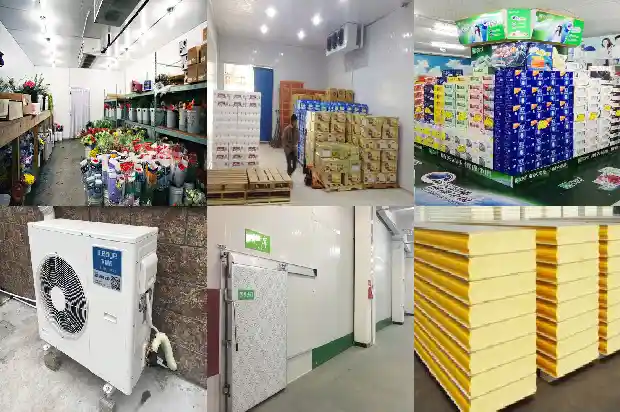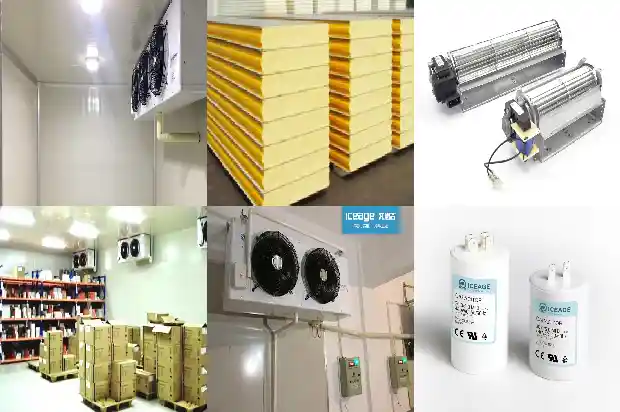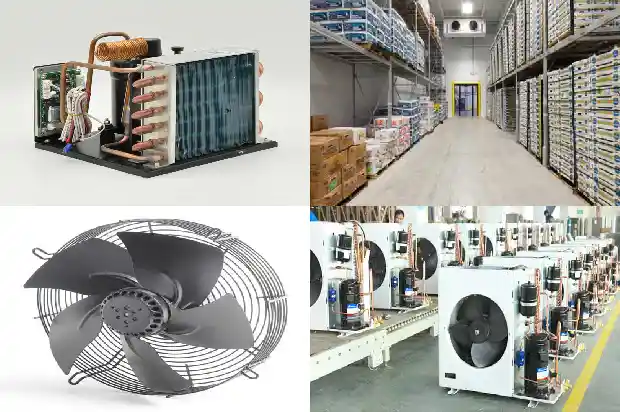Introduction to common cooling capacity performance coefficient and main parameters of water chillers
2024-09-05
I. Main operating parameters of chillers
- Voltage: Currently, chillers use two voltages: 220V (single-phase) and 380V (three-phase). The power supply voltage must match the equipment's power consumption voltage. Too high or too low a voltage will affect the safe operation of the chiller.
- Current: There is a current on the nameplate of the chiller and the actual operating current.
- Power: The power consumption of the chiller during operation.
- Temperature: The temperatures of the chiller include evaporator temperature, condensation temperature, compressor suction temperature, compressor discharge temperature, intermediate temperature, subcooled temperature of the refrigerant in front of the throttle valve, compressor oil temperature in the crankcase, cooling water temperature, chilled water temperature, etc.
- Pressure: The pressures of industrial chillers include evaporation pressure, condensation pressure, intermediate pressure, cooling water pressure, chilled water pressure, lubricating oil pressure, etc.
- Flow rate: Refrigerant flow rate, cooling water flow rate, chilled water flow rate, etc.
- Liquid level: Oil liquid level in the crankcase and refrigerant liquid level.
Correctly select and specify the above parameters, and control each parameter during operation to keep it within the permitted upper and lower limits for economic and reasonable operation, so as to achieve the effect of large refrigeration capacity and low energy consumption, and greatly improve the service life of the chiller.
II. How to select a chiller
Refrigeration capacity = chilled water flow rate * 4.187 * temperature difference * coefficient
Refrigeration capacity = chilled water flow rate * 4.187 * temperature difference * coefficient
- Chilled water flow rate refers to the required cold water flow rate when the machine is working. The unit needs to be converted to liters/second.
- Temperature difference refers to the temperature difference between the inlet and outlet water of the machine.
- 4.187 is a constant (specific heat capacity of water).
- When choosing an air-cooled chiller, multiply by a coefficient of 1.3. When choosing a water-cooled chiller, multiply by a coefficient of 1.1.
- Select the corresponding machine model according to the calculated refrigeration capacity.
Generally, people are used to calculating how large a chiller is required in terms of P. But the most important thing is to know the rated refrigeration capacity. Generally, if the air-cooled one is about 9.07KW, choose a 3P machine, and so on. Therefore, the most important thing in selecting an industrial chiller is to find out the rated refrigeration capacity.
III. National standard industrial refrigeration equipment refrigeration capacity performance and coefficient:
- For scroll chillers, the performance coefficient (COP) requirements are as follows: When the rated refrigeration capacity is less than 528KW, the COP should not be less than 3.8; when the rated refrigeration capacity is 528-1163KW, the COP should not be less than 4.0; when the rated refrigeration capacity is greater than 1163KW, the COP should not be less than 4.2.
- For screw chillers, the performance coefficient (COP) requirements are as follows: When the rated refrigeration capacity is less than 528KW, the COP should not be less than 4.10; when the rated refrigeration capacity is 528-1163KW, the COP should not be less than 4.
30; when the rated refrigeration capacity is greater than 1163KW, the COP should not be less than 4.60.
- For centrifugal chillers, the performance coefficient (COP) requirements are as follows: When the rated refrigeration capacity is less than 528KW, the COP should not be less than 4.40; when the rated refrigeration capacity is 528-1163KW, the COP should not be less than 4.70; when the rated refrigeration capacity is greater than 1163KW, the COP should not be less than 5.10.
- For evaporative cooling or air-cooled chillers/piston type/scroll type chillers, the performance coefficient (COP) requirements are as follows: When the rated refrigeration capacity is less than or equal to 50KW, the COP should not be less than 2.40; when the rated refrigeration capacity is greater than 50KW, the COP should not be less than 2.60.
- For air-cooled or evaporative cooling screw chillers, the performance coefficient (COP) requirements are as follows: When the rated refrigeration capacity is less than or equal to 50KW, the COP should not be less than 2.60; when the rated refrigeration capacity is greater than 50KW, the COP should not be less than 2.80.
- The integrated part-load performance coefficient (IPLV) requirements for water-cooled screw chillers are as follows: When the rated refrigeration capacity is less than 528KW, the IPLV should not be less than 4.
47; when the rated refrigeration capacity is 528-1163KW, the IPLV should not be less than 4.81; when the rated refrigeration capacity is greater than 1163KW, the IPLV should not be less than 5.13.
- The integrated part-load performance coefficient (IPLV) requirements for centrifugal water-cooled chillers are as follows: When the rated refrigeration capacity is less than 528KW, the IPLV should not be less than 4.49; when the rated refrigeration capacity is 528-1163KW, the IPLV should not be less than 4.88; when the rated refrigeration capacity is greater than 1163KW, the IPLV should not be less than 5.42.
For air-cooled unitary units with a nominal refrigeration capacity greater than 7.1kW, the energy efficiency ratio requirements are as follows: When there is no air duct, the energy efficiency ratio is not less than 2.60; when there is an air duct, the energy efficiency ratio is not less than 2.30.
For water-cooled unitary units with a nominal refrigeration capacity greater than 7.1kW, the energy efficiency ratio requirements are as follows: When there is no air duct, the energy efficiency ratio is not less than 3.00; when there is an air duct, the energy efficiency ratio is not less than 2.
70.
- Use side: Refrigeration inlet/outlet water temperature 12/7℃.
- Heat source side (or heat release side): For water-cooled type, the inlet and outlet water temperatures of cooling water are 30/35℃. For air-cooled type, the dry bulb temperature of refrigeration air is 35℃. For evaporative cooling type, the wet bulb temperature of air is 24℃.
- Use side and water-cooled heat source side: Fouling factor 0.086m2.℃/kW.
Related Articles
- Introduction to Inspection and Handling Methods for Refrigerant Leak in Cold Storage
- Introduction to Control Valves in Refrigeration Systems
- Introduction to Basic Types of Cold Storage
- Introduction to Lithium Bromide Absorption Chillers
- Introduction to the Advantages of Dual - temperature Cold Storage
- Introduction to Various Water Tanks in Air - conditioning Systems
- Introduction to the Cleaning Processes and Methods of Heat Exchangers and Cooling Towers
- Introduction to Six Kinds of Two-stage Compression Refrigeration Systems
- Introduction to Key Points of Compressor Grouping in Quick-freezing Cold Storage
- Introduction to the Construction and Features of Cold Storage in Cold Chain Logistics
- All-round Introduction to Condensers and Evaporators!
- Introduction to Vapor Barrier of Cold Storage and Moisture Protection of Equipment
- Introduction to Oil Collector in Refrigeration System
- Technical Introduction of Process Cooling Water System
- Introduction to Air-cooled Chiller
- Introduction to Five Classification Functions of Cold Storage Installation for Refrigeration
- Introduction to Precooling Methods for Fruits and Vegetables
- Introduction to the Relationship between Refrigerants and Cold Storage Temperatures
